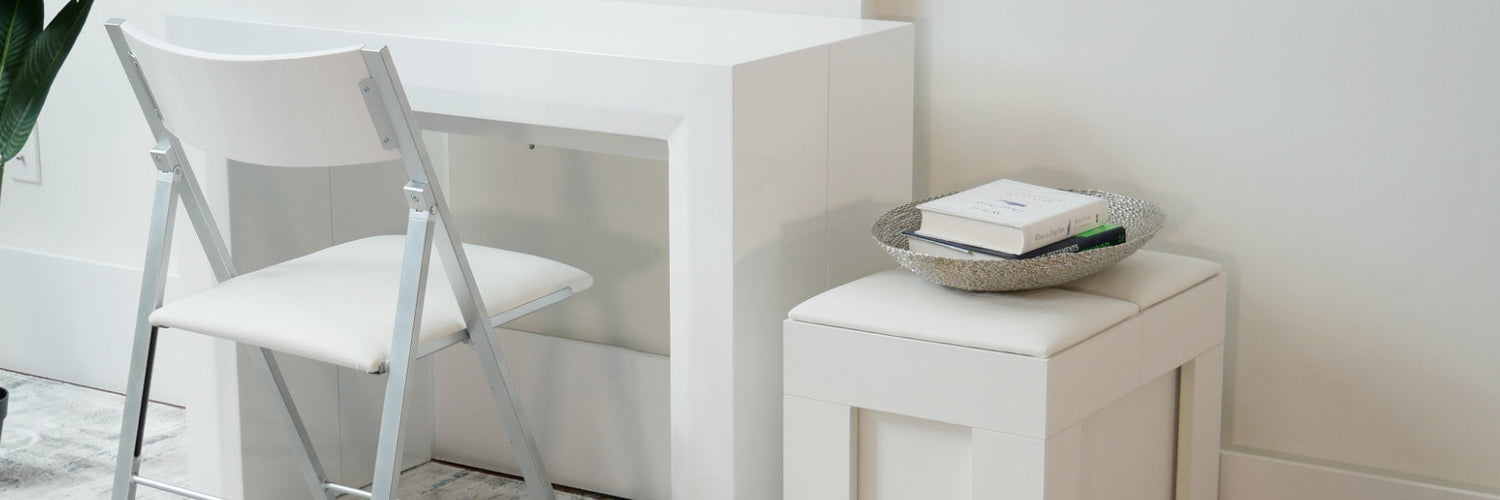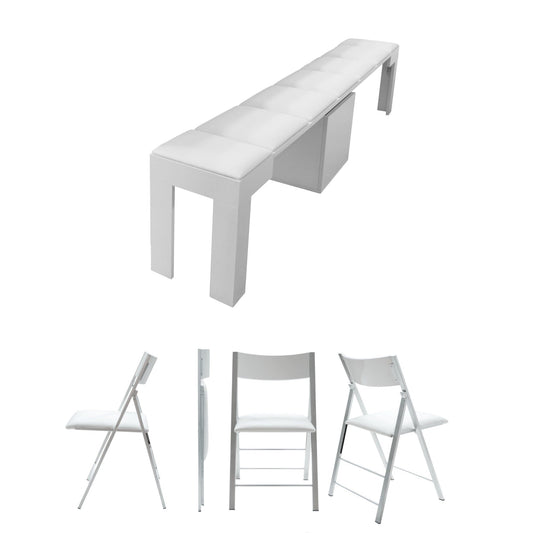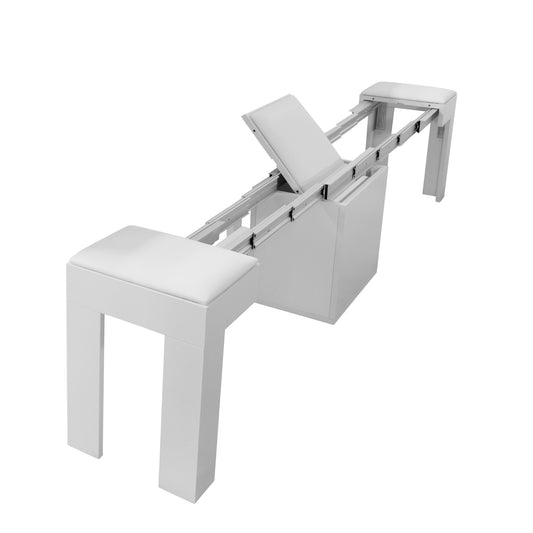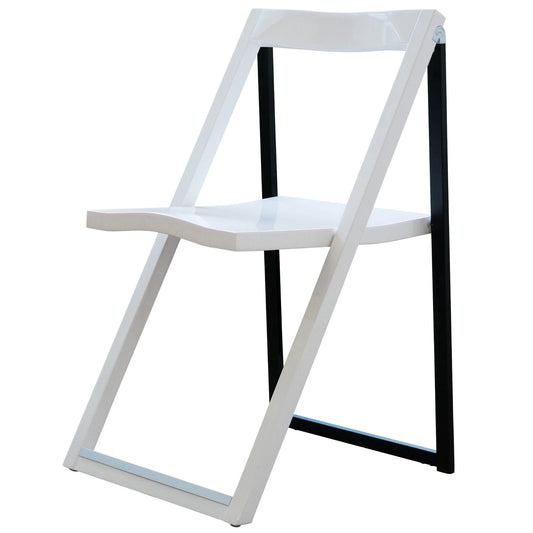Layered lighting is a lighting technique used by interior designers, photographers, and lighting professionals to fill a room with light as a way to give it depth, balance, and focus by combining ambient, task, and accent lighting. By using the three together it balances brightness, prevents harsh shadows, and draws attention to focal points.
Interior designers in particular use layered lighting to give a room depth, balance, and focus by changing the brightness, focuses, and hues.
The three layers of layered lighting include:
- Ambient lighting which creates the base level of light in a space and includes daylight, chandeliers, or recessed ceiling fixtures.
- Task lighting targets specific activities to help a person like reading under a desk lamp or preparing food under cabinet lights.
- Accent lighting adds visual depth by highlighting features like artwork spotlights or wall sconces that cast shadows for drama.
Layered lighting is a way to complement your interior design by providing focus to centerpieces on tables, or accenting furniture used as design elements in your room. When done correctly layered lighting influences mood, emphasizes architecture, and keeps spaces adaptable from day to night.
Here’s how you can use this interior design technique to transform your room by only modifying the lighting. We’ll start with the benefits and then share how to use this lighting technique by the type of room you’re applying to.
Benefits of Layered Lighting in Interior Design
The three main benefits of layered lighting are adding depth, focus, and mood control to a space as a way to quickly change how a room feels and how people use it. A living room can go from somewhere you study or read a book to a space that has energy and is perfect for a party or game night.
- Depth - Accent lighting casts shadows and highlights, making objects and surfaces feel more three dimensional. For example, wall sconces on either side of a painting create contrast that separates it from the wall, making it a visual focal point instead of background décor.
- Focus - Layered lighting directs attention, just like a photographer frames a subject. Overhead pendants above a dining table or a bed instantly signal the primary function of that space, guiding the eye and anchoring the room’s layout.
- Mood and Emotional Impact - Light affects the body’s circadian rhythm, influencing sleep patterns, alertness, and mood. Cooler daylight tones can energize a home office, while warm, dim light in a bedroom supports relaxation.
Light affects the body’s circadian rhythm (the 24 hour natural cycle that regulates your physical and mental behaviors), influencing sleep patterns, alertness, and mood. Cooler daylight tones can energize a home office, while warm, dim light in a bedroom supports relaxation.
There’s also evidence linking how much natural bright light a person gets and their amount of social engagement. A 2008 naturalistic study monitored people’s amount of exposure to bright light by having them wear light meters set to record at 1,000 lux. They found that exposure to bright light correlates with better mood and more positive social interactions over short periods.
What we can learn from this is balance. By adjusting each layer’s brightness, color temperature, and placement, you can create a space that supports both function and atmosphere.
How to Use Layered Lighting In Your Interior Design
Installing layered lighting is easy because it uses fixtures and bulbs you may already own like lamps, ceiling lights, or sconces. It’s affordable since most updates involve repositioning existing lights, or adding low-cost options such as LED strips or table lamps.
Layered lighting is also practical because the same setup can adapt to different moods and activities, letting you shift from bright task lighting for work to soft accent lighting for relaxation without major renovations.
Here are examples of how you can apply this to living rooms, home offices, and bedrooms so the ambient, task, and accent layers can work together to enhance both function and atmosphere.
Example 1: Living Room
Living rooms serve multiple purposes, whether entertaining, relaxing, reading, or watching TV, so the lighting needs to shift with the activity.
Ambient Lighting
Natural light during the day keeps the room bright and open, but it needs to be moderate because too much daylight can wash out accent lighting, while too little can make the space feel dull. For ambient lighting in living rooms use blinds, sheers, or adjustable shades to regulate sunlight so it complements and does not compete with other layers.
Task Lighting
Reading lamps beside armchairs or adjustable floor lamps near a sofa give targeted light for reading or crafts like knitting and playing games on a tablet or smartphone. They let you keep the rest of the room dim for a more intimate feel.
Accent Lighting
Wall sconces, candles, or LED strips behind shelving add depth and visual interest by using softer lights to create shadow effects that make the room feel layered and cozy, especially at night.
Example Layout
- Dim or switch off overhead lights for movie nights to avoid glare
- Use floor lamps as ambient light sources in corners to keep the space balanced
- Add warm table lamps to accent side tables, which will fill shadowed areas without overpowering the scene
When adjusted together, these layers let you shift instantly from a bright daytime gathering space to a low-lit, intimate evening setting. One of the most popular layered lighting techniques for living rooms is mood lighting.
The Steps to Add Mood Lighting in Your Living Room
What You’ll Need:
- Wall Sconces
- Table lamps
- Suspended light (chandelier or other fixture)
- Candles or LED light strips
- Floor lamps
Steps:
- Dim overhead lighting or turn off completely if no dimmer is available
- (Optional) Create ambient lighting using floor lamps or suspended lights (make sure bulbs match color temperature)
- Light up candles or wall sconces as accent lighting to create shadow effects on walls
- Fill large dark voids with small table lamps, such as on accent side tables
Example 2: Home Office
Home offices need lighting that supports focus during the day and reduces eye strain at night. Layered lighting ensures the workspace is bright enough for productivity while keeping glare and harsh shadows under control.
Ambient Lighting
Overhead fixtures like pendant lights or ceiling-mounted LEDs provide an even wash of light across the room. This prevents dark corners that can make the space feel smaller and helps balance brightness between your workstation and background.
This setup is ideal for people with modular workstations, such as a Murphy Bed work desk combination, without a nearby desk lamp available.
Task Lighting
Desk lamps or under-shelf lighting keep your work area bright enough for reading, typing, or drawing. They should be positioned to avoid casting shadows on your work surface and to reduce glare on computer screens.
Accent Lighting
Wall sconces or art lights can highlight motivational artwork, diplomas, or design elements behind your desk. These visual breaks give your eyes a rest when looking away from screens and make the space feel more personalized.
Example Layout
- Use blinds or sheer curtains to control natural light and prevent direct glare on screens
- Keep a pendant or ceiling fixture as the main ambient source, dimmable for late evenings
- Position a desk lamp to the side of your dominant hand to prevent casting shadows
-
Add a spotlight or sconce to a wall feature that inspires focus and creativity
With the right balance, your home office lighting can transition seamlessly from energizing daylight work sessions to providing focused and calm nighttime productivity. The most important thing for a home office is focus, especially when noises are coming in from the kitchen, family room, and neighbors. Here’s one way to use layered lighting to create focus for your home office.
Using Layered Lighting to Boost Focus
What You’ll Need:
- Table lamps
- Window blinds or an overhead light dimmer
- Wall sconces or accent lights
- Suspended light
The Steps:
- Use blinds or a light dimmer control direct light that can cause a glare on screens (create a dim environment, but not dark)
- Fill the ambient light with a suspended light above your workstation
- Use table lamps during nighttime to illuminate work stations
- Install accent lights around artwork or decor to focus your attention when looking away from your screen or task.
Example 3: Bedroom
Bedroom lighting should support two goals: helping you wake up refreshed and winding you down for rest. Layered lighting gives you the control to shift between bright, energizing mornings and soft, relaxing evenings.
Ambient Lighting
Ceiling fixtures, recessed lights, or a pair of matching wall sconces provide an even glow for dressing, cleaning, or organizing. This base layer should be bright enough for morning routines but dimmable or switchable to warmer tones for nighttime.
Task Lighting
Bedside lamps, pendants, or wall-mounted reading lights give focused illumination for reading, journaling, or working before bed. Placing them within arm’s reach keeps you from getting up to adjust lighting, maintaining a calm bedtime routine.
Accent Lighting
LED strips behind a headboard, candles on a dresser, or small uplights in corners create shadows and warmth. These lights cue the body to relax by lowering the overall brightness in the space.
Example Layout
- In the evening, close blinds or curtains to block outdoor light and switch ambient fixtures to warm, low levels.
- Use bedside lamps or pendants for reading before sleep, keeping light directed downward to avoid waking your partner.
- Add subtle accent lighting behind furniture or along shelves to maintain visibility without overstimulation.
- In the morning, open curtains or blinds first to let natural light work with your ambient layer to boost alertness.
With thoughtful placement and control, bedroom lighting can work with your body’s natural rhythms, helping you transition smoothly between rest and activity. Layered lighting can be tested and adjusted to help you get your best night’s sleep.
Using Layered Lighting to Get a Good Night’s Rest
What You’ll Need:
- End table lamps
- Task lights (pendants, torchieres or desk lamps)
- LED strips or candles for accent lights
- Wall sconces or Track lighting
The Steps to Do This:
- Eliminate natural light using blinds or curtains and dim or turn off any overhead lighting.
- Use accent table lamps to provide ambient lighting for the area near your sofa or armchair.
- Slightly illuminate perimeter walls or counters using under-counter lights, rail lights, (similar to the lights used to illuminate your kitchen at night), or battery operated candles so you do not fall asleep with a lit flame.
- Use task lights like desk lamps or torchieres if you read before bed.
Layered lighting isn’t about installing more fixtures, it’s about controlling light with purpose. Each layer plays a role where ambient sets the foundation, task supports activities, and accent adds depth and character. The right mix changes as the day does.
Brighter, cooler tones keep kitchens and offices energizing in the morning. Warmer, dimmer light turns living rooms and bedrooms into relaxing evening spaces. You don’t have to get it perfect on the first try. Experiment with brightness levels, reposition fixtures, and adjust color temperatures until the room supports how you live in it.
When every layer works together, the space feels balanced, functional, and inviting, no matter the time of day.











